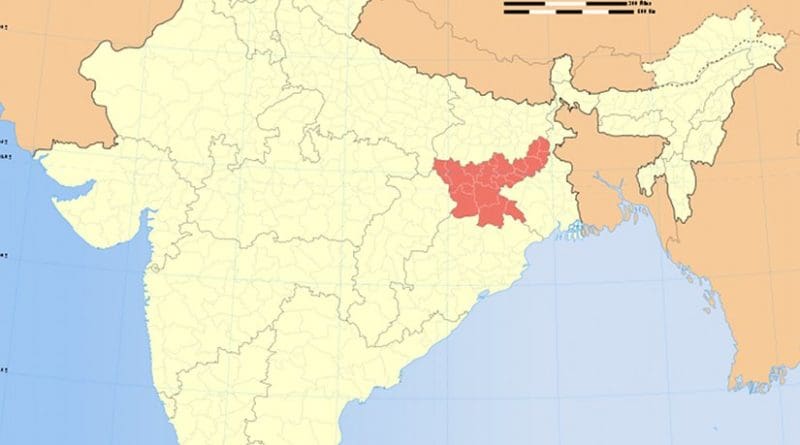The Dream That The State Sells – Analysis
Given that the state has continued to wrest territories from the control of the Communist Party of India-Maoist (CPI-Maoist), the nature of governance to be unleashed in such areas has remained a subject of speculation. Whether a developmental state would seek to undo the decades-long policies of neglect and deprivation that formed the edifice for a Maoist success story? Or would the state behave in the same predatory way the extremists have warned all along, acting to open up the tribal inhabited resource rich areas for a range of economic activities including mining, while glossing over the need to involve the tribals in the decision making process or even bothering to gather their consent.
In spite of the claims of advance against the extremists, Chhattisgarh still remains noticeably affected. Its Bastar region continues to be a stronghold of the CPI-Maoist, a state-of-affair which may not change for at least a couple of years to come. However, Jharkhand and Maharashtra are two states that have made steady gains against the CPI-Maoist. And the recent developments indicate what the Maoist literature had warned might be true, i.e. these states have indeed initiated steps to start mining and other activities in the erstwhile extremist affected areas, without bothering to seek the consent of the tribals who would be the most affected by such decisions. Worse still, such decisions have been enforced by attempting to silence any hint of opposition.
Although Jharkhand pursued a somewhat confused policy against the CPI-Maoist initially, its police force has nearly accomplished what its Andhra Pradesh counterparts had managed to achieve in 2005. Using a range of tactics that includes investment in police capacity building, carrying out sustained high profile area clearing operations, and also pursuing a policy of using renegade extremist factions against the CPI-Maoist, it has nearly managed to cleanse the state off the outfit’s presence.
The state’s abysmal failure in kickstarting development projects in Saranda, an area cleared of Maoist presence since 2013, has been mentioned in several forums. Unfinished roads, incomplete school buildings, and failing healthcare systems narrate how the state bureaucracy lost interest in the area after it became Maoist free. Additionally, recent developments have drawn attention to the state’s future plans of opening up tribal areas in the state for economic projects. Proposed amendments to two important Acts, the Chhotanagpur Tenancy Act and the Santhal Pargana Tenancy Act, will allow tribal lands to be taken for not just infrastructure projects and ‘just’ mining and industry, but even for, as a newspaper article put, “construction of marriage halls.” A massive tribal movement is building up in the state over the decision of the BJP government, which interestingly in 2015, had categorically promised to maintain the sanctity of these two Acts.
Maharashtra is not comparable to any other Maoist affected state. Only one of its districts, Gadchiroli, sharing a border with Chhattisgarh and the Maoist stronghold of Abujhmaad is affected by extremism. According to police claims, Maoists have been comprehensively defeated in the district. The CPI-Maoist has accepted to have lost 60 of its cadres to security forces’ operations in the past seven years. Of the total 270MT iron ore reserves in the state, over 180 MT are in Gadchiroli. Lloyd Steel and two small companies were granted the permission for mining operations in the Surjagarh hills, Damkodvadavi hills and Agri Maseli in 2007. But the project has been delayed in view of the Maoist threat and opposition from the tribals. In 2013, the vice president of Lloyd Steel was shot dead by the CPI-Maoist. In March 2016, months after the state police declared victory over the Maoists, Lloyds Steel began extracting ore from a mine in Surjagadh and claimed to have provided jobs to about 300 people at the site. But the operations shut down within days due to local opposition by groups against mining as well as others who wish for a processing plant closer to the mining site. Since then, the state government has been asking New Delhi to increase the troop presence in the region.
Apparently a systematic regime of terror has been unleashed by the C-60, Maharashtra’s anti-Maoist commando force, targeting the anti-mining tribal activists as well as tribals who have been working to implement the Provisions of the Panchayats (Extension to the Scheduled Areas) Act in the district. The CPI-Maoist has brought out a pamphlet listing over 191 cases of such torture between January and June 2016. The government’s response has been to propose a law that makes distribution of any literature an offence attracting arrest.
It is convenient to see a CPI-Maoist conspiracy in opposing the state governments’ initiatives in Jharkhand and Maharashtra. It is probably right to assume that the outfit will gain out of the popular discontentment. However, the larger question is the gap between the dream that the state is attempting to sell to the areas afflicted by extremism and the reality of its intentions after the extremists have been defeated.
This article was published at IPCS

